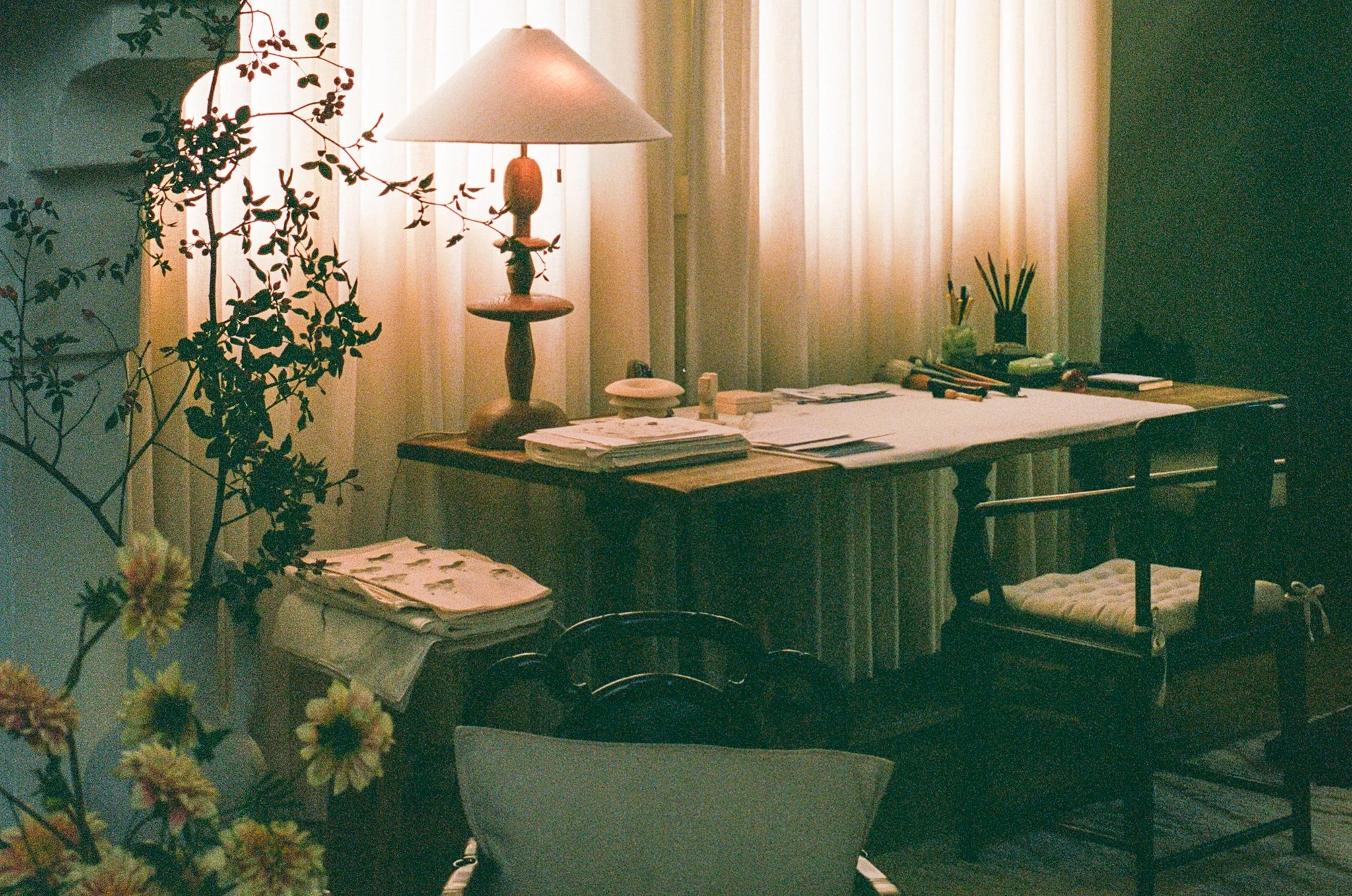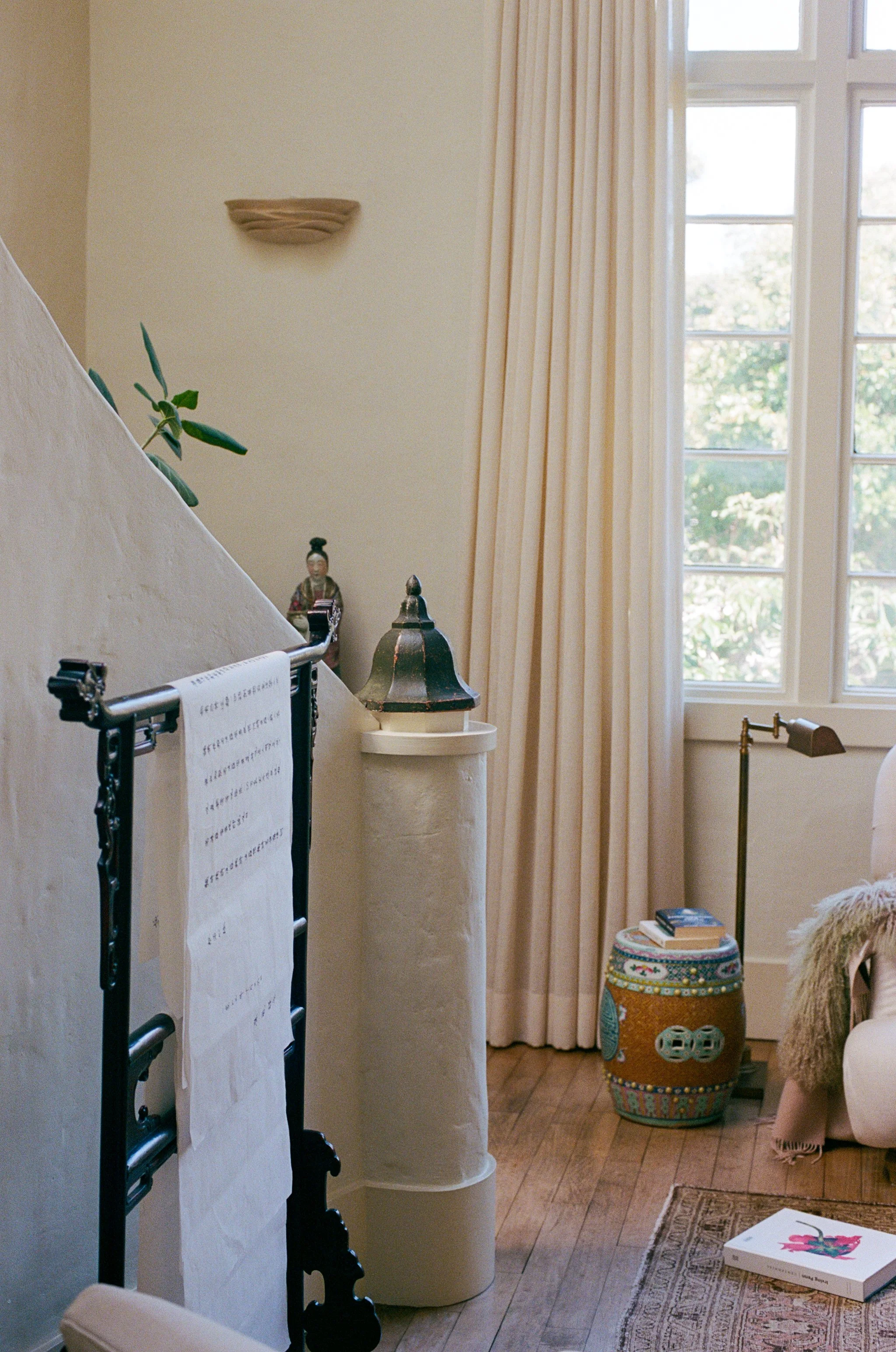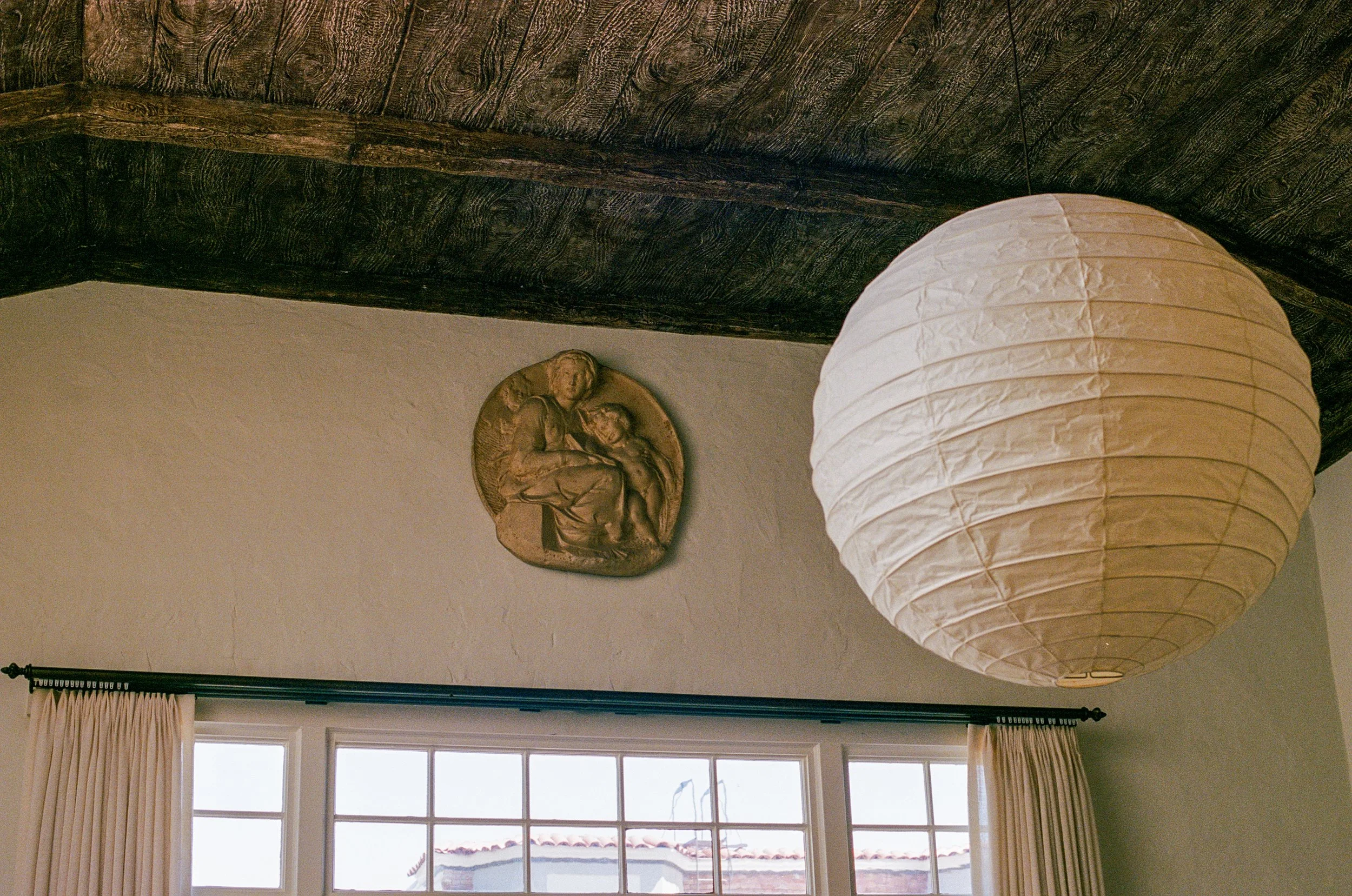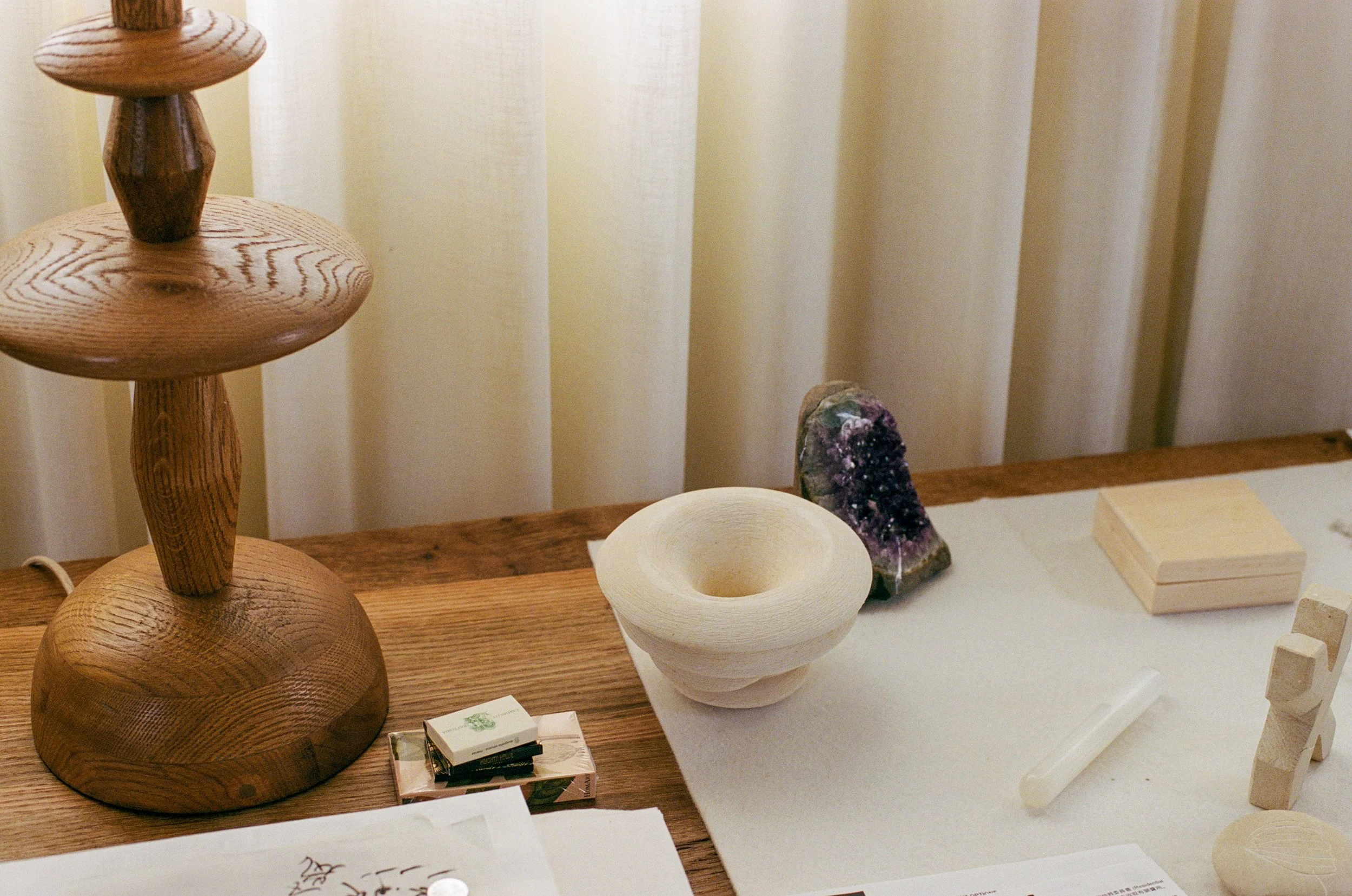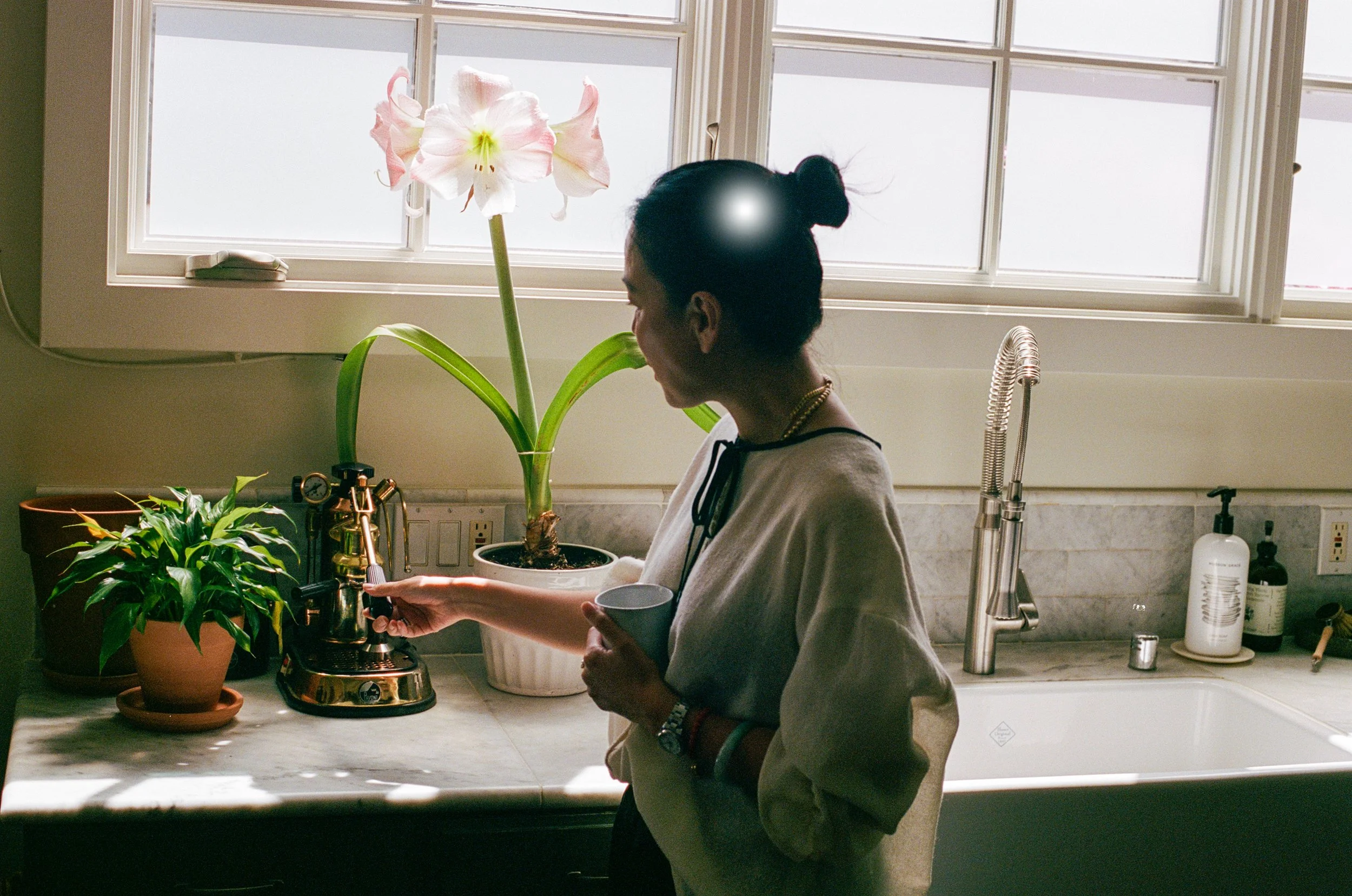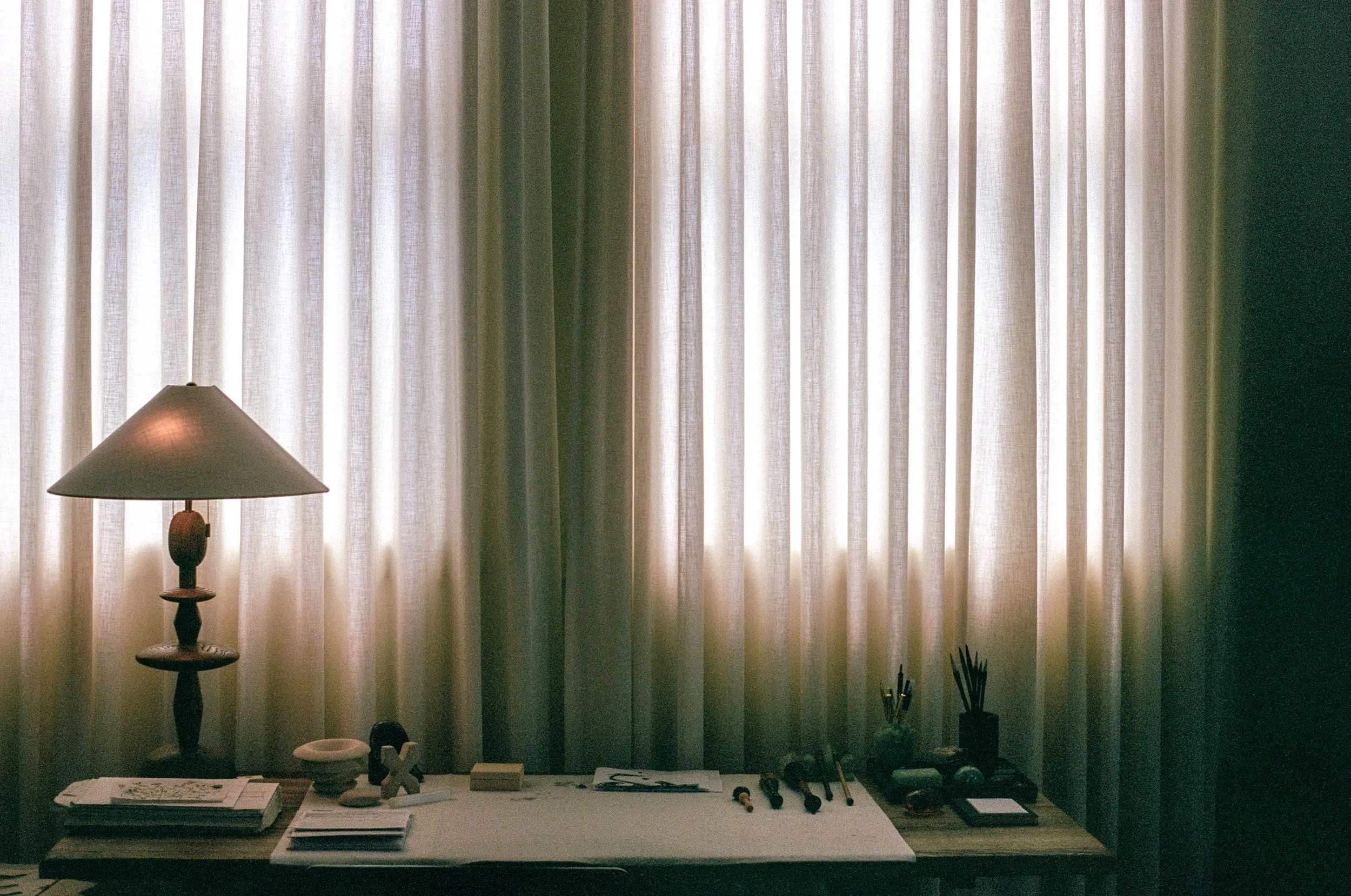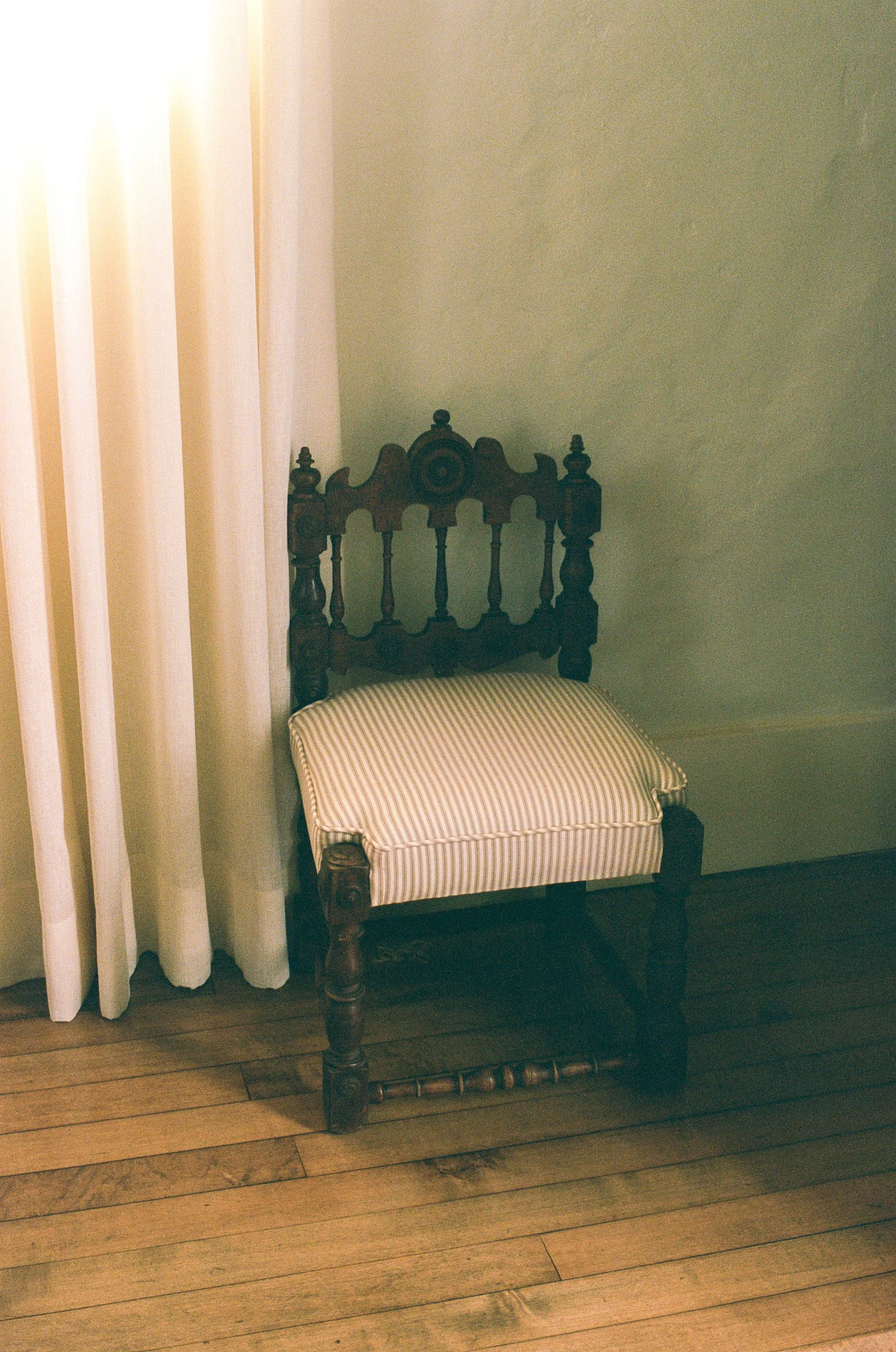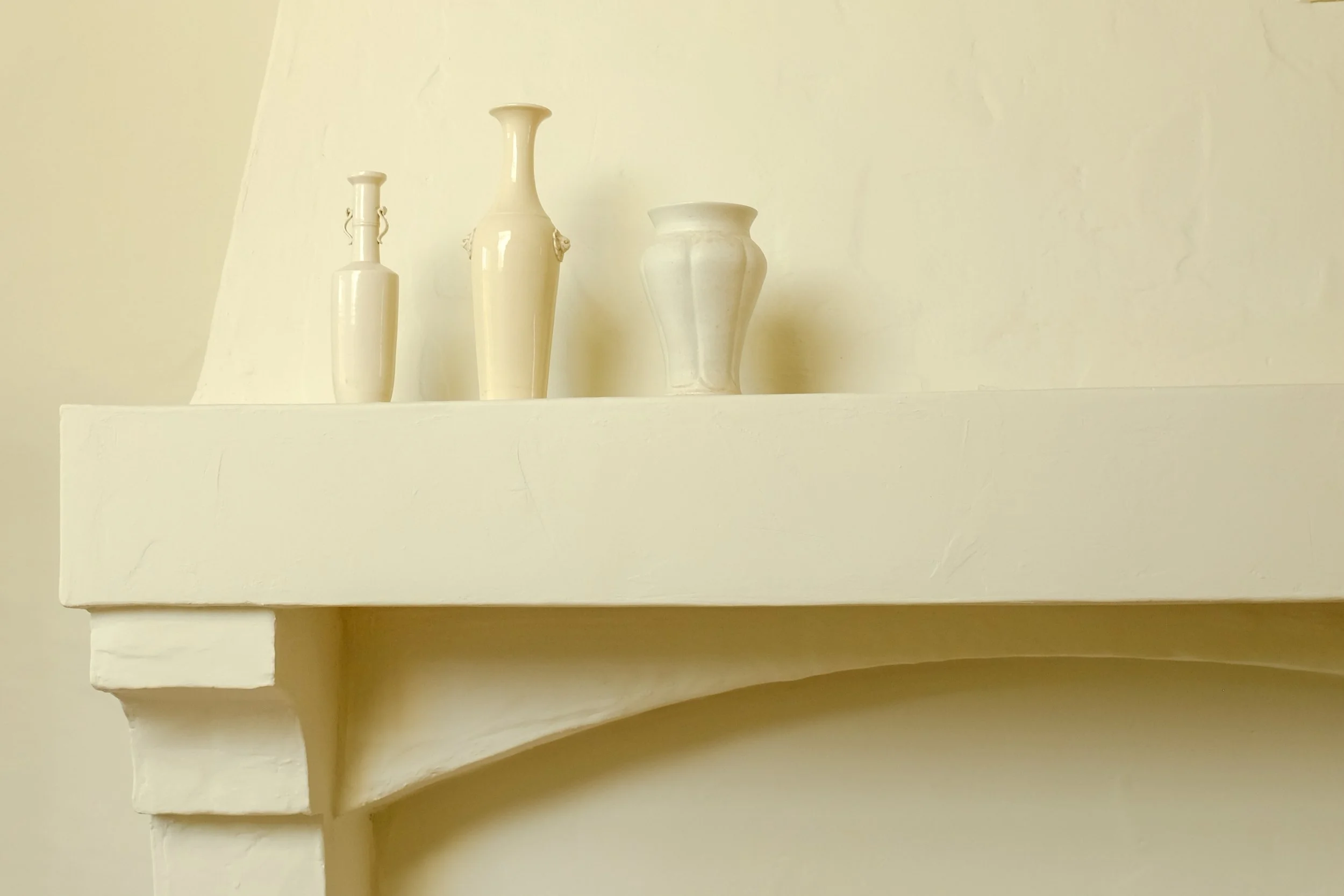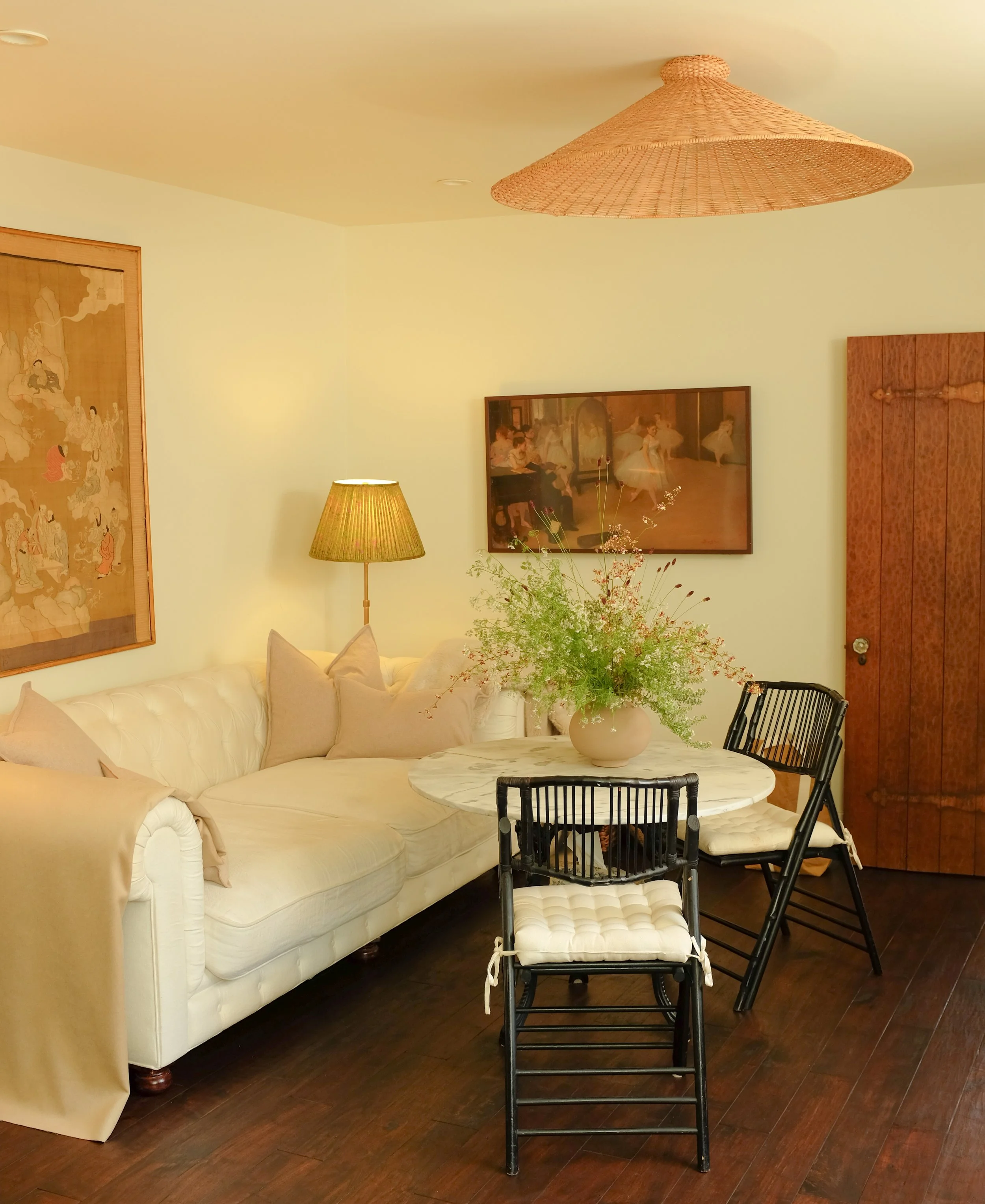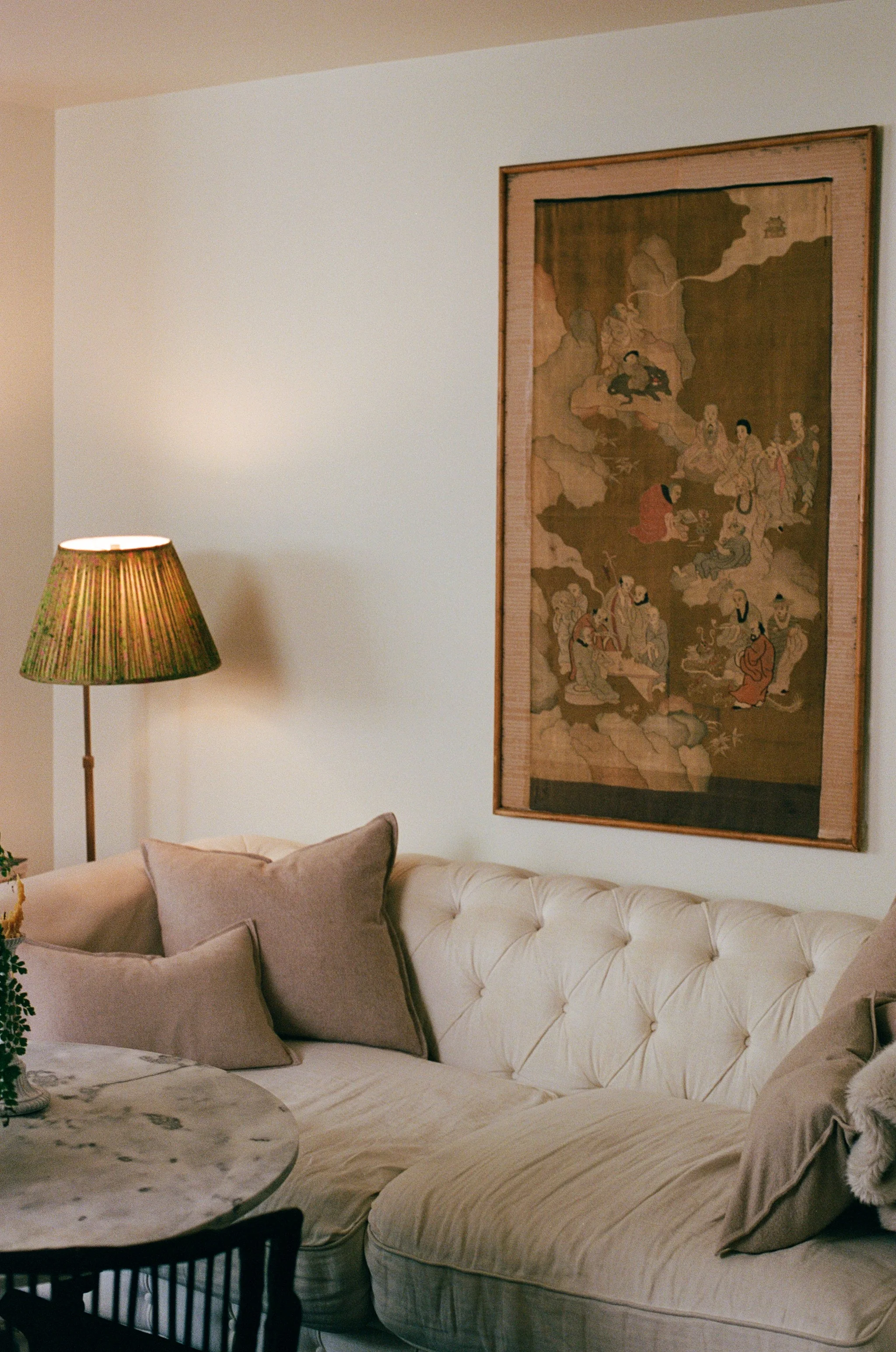Lan Jaenicke
Lan Jaenicke is the designer and founder of her eponymous San Francisco based brand. Lan’s work is rooted in proportion, movement, and artistry. We visited with Lan in her stunning San Francisco abode where we learned of how she often draws on Chinese philosophy—balance, harmony, and the idea of emptiness as space for possibility. She also shared how her clothing and home are both about creating beauty and freedom, places where people can feel at ease and fully themselves. Read on to learn more.
Q: Tell us how rituals play a role in your daily life.
Rituals are what ground me. They don’t have to be elaborate - in fact, the beauty of ritual is often in its simplicity. It might be lighting incense before I begin designing, or stepping into the garden after dinner to breathe the evening air. These gestures may seem small, but they are intentional pauses that help me shift from one state of mind to another.
In Chinese philosophy, presence is essential—when you are fully in the ritual, no matter how ordinary, you are fully in life. I think of it as cultivating awareness. Pouring tea becomes an act of gratitude. Lighting incense becomes an invitation to focus. Even tidying the studio can feel like clearing the mind.
These moments of ritual also create rhythm in my days, like brushstrokes in a painting. They provide structure without rigidity. They remind me to live not just in the doing but in the being, to balance action with reflection. For me, rituals transform the everyday into moments of balance and meaning.
“In Chinese philosophy, presence is essential—when you are fully in the ritual, no matter how ordinary, you are fully in life. I think of it as cultivating awareness.”
Q: Can you give us a glimpse into your morning routine?
The first thing I do is turn on music and open the windows to let the fresh air in. The whole house comes alive. Then I sit in the morning sun, letting myself fully feel its warmth, with a sense of quiet gratitude. That combination—music, fresh air, and stillness—makes the day begin with both energy and calm.
My first drink is always hot, made with Chinese dates, goji berries, and ginger to warm me up. After that, I take time for my morning meditation. Then I’ll have breakfast, and afterward I make another pot of tea, which I often carry with me while getting dressed and putting on lipstick.
Getting dressed is effortless, because I design my clothes to harmonize with one another. Often I’ll wear something still in development to test the fit and proportion in daily life. Putting on lipstick with my tea in hand is a small ritual of joy—I’ve collected them like treasures over time.
“Rather than filling every corner, I leave room for light, for breath, for the energy of the space to move freely. Natural light is a design element as much as furniture or art.”
Q: How did your path lead to where you are now?
My path wasn’t linear. I studied mathematics at university, which trained me to think in terms of structure, proportion, and clarity. After graduation I worked briefly in the corporate world, but I realized very quickly that I needed a more creative outlet—something that combined precision with artistry. That led me back to graduate school, this time for fashion design.
That transition felt very natural in hindsight. Mathematics gave me discipline and a sense of balance, while fashion gave me freedom and expression. The two are not as far apart as they seem—both are about patterns, geometry, and finding beauty in proportion. Chinese philosophy also influenced me deeply: the idea that everything is interconnected, that form and emptiness define each other, and that harmony comes from alignment rather than force.
So while my path has had unexpected turns, every step contributed to where I am now—designing clothing and living spaces that embody structure, fluidity, and presence.
Q: Your space is so peaceful and calming. How has your aesthetic evolved over time?
I’ve always been drawn to simplicity, but over time I’ve realized that simplicity is not emptiness—it’s fullness expressed quietly. This is something I carry from Chinese philosophy, where balance, harmony, and restraint are not about denial but about allowing space for meaning to emerge.
In Daoist thought, the concept of wu wei—effortless action—reminds us that flow and ease can be more powerful than force. I apply that in both my designs and my home. Rather than filling every corner, I leave room for light, for breath, for the energy of the space to move freely. Natural light is a design element as much as furniture or art.
Textures are layered thoughtfully, like brushstrokes in a painting, each adding depth without overwhelming the whole. Objects are chosen with intention—pieces that carry history, memory, or artistry. In Chinese aesthetics, a single stone or vessel can embody the universe if it’s placed with awareness. I approach interiors in that way: editing until what remains feels inevitable, like it has always belonged.
So my aesthetic has evolved into something pared back but rich with meaning—a kind of quiet resonance. Just as in my clothing, it’s about finding beauty not in excess, but in proportion, in presence, and in the spaces in between.
Q: What’s your favorite time of day?
Morning, always. The first light feels like renewal, a fresh page, a space where anything is possible.
Q: How do you reset after a long day?
Because I often work late into the evenings with my overseas team, my days can stretch on. Sometimes I break them in the middle with a hot shower and a cup of tea, which gives me a moment to pause and recharge before returning to work. Other times I power through until the very end.
Evenings are about creating quietness. I keep the atmosphere soft—candles, warm light, sometimes music, sometimes just the gentle hum of the house. That quiet allows the day to dissolve gradually. Sleep is my deepest reset. I think of it as a form of meditation, a way of returning to balance. Just as in the morning I begin with warmth and gratitude, at night I let everything go.
Q: What are future projects you dream about?
I dream of creating experiences that extend beyond clothing—moments where design and philosophy come together. For my next collection, I’ll be showcasing it in a full sensorial way, engaging sight, touch, and even taste. I want people to not only see the garments but to feel the textures, to move within the atmosphere, to taste and smell elements that bring the collection to life. I would also love to keep collaborating with artists across disciplines—painters, dancers, musicians—to build dialogues between movement, form, and stillness. To me, fashion has always been an experience—something you feel, not just something you see.


